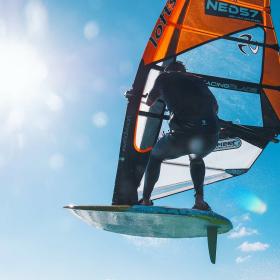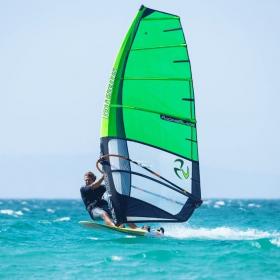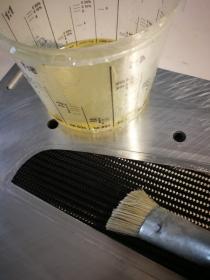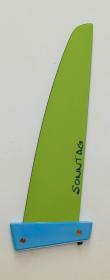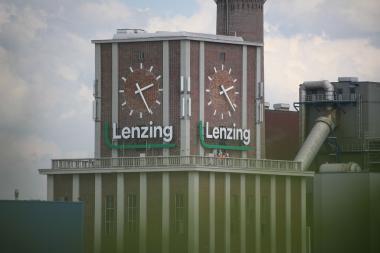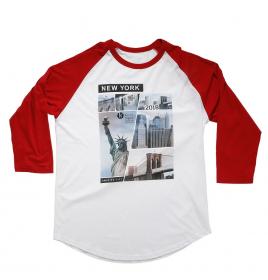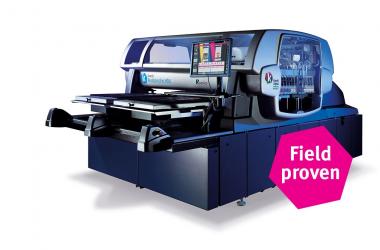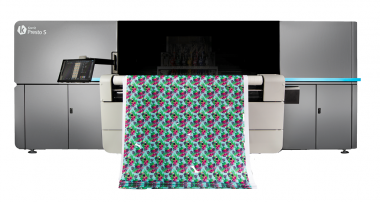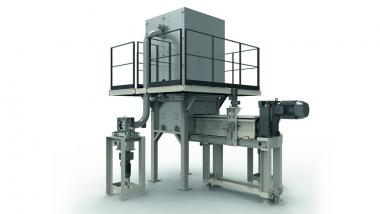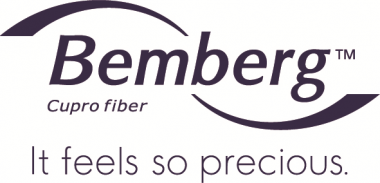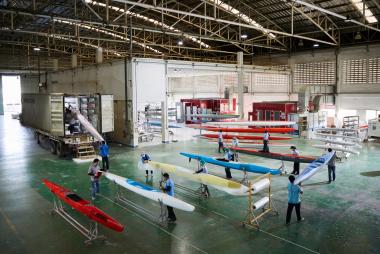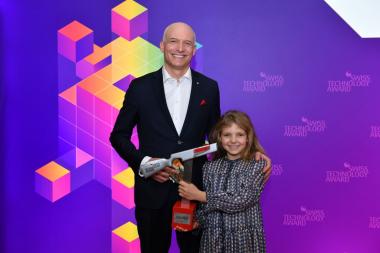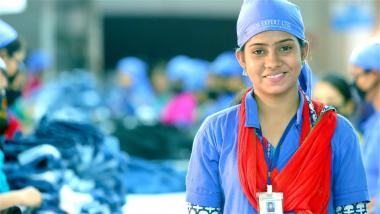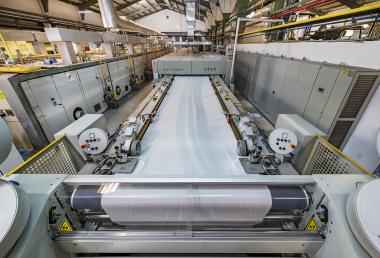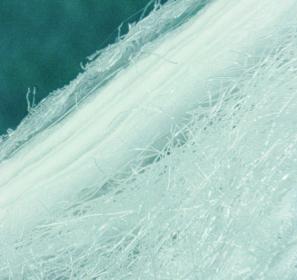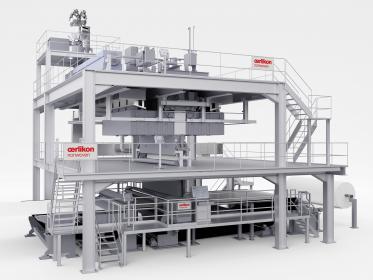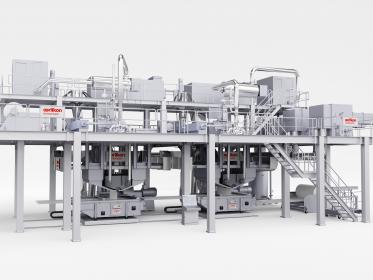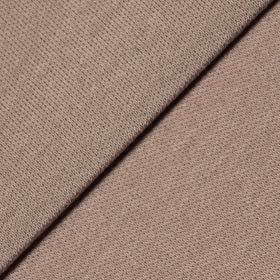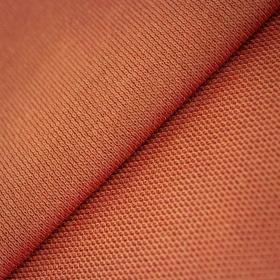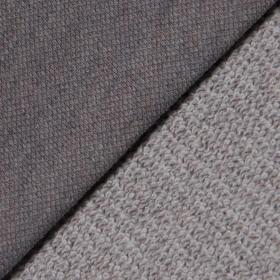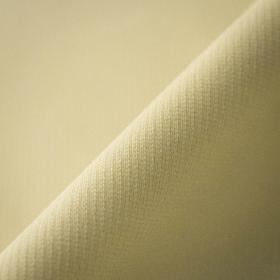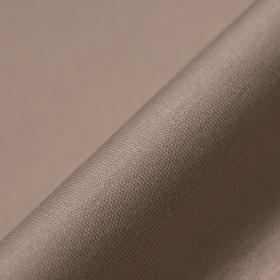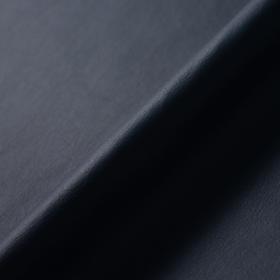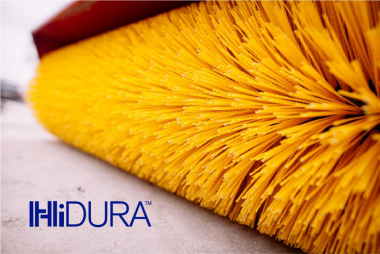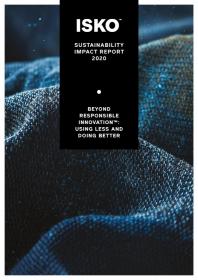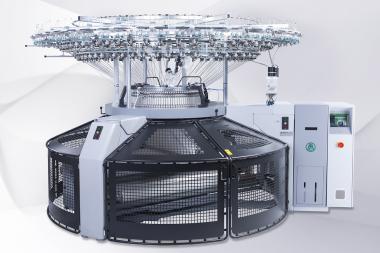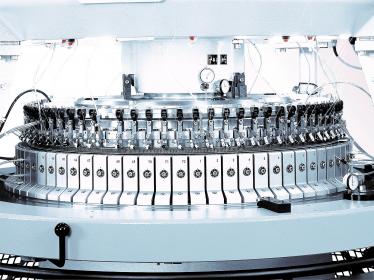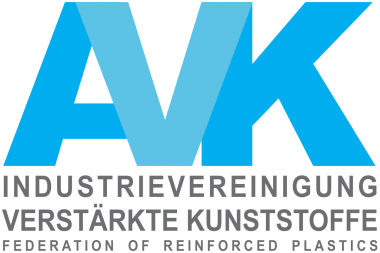Sonntag Fins Switch to Sicomin’s GreenPoxy® 33 Bio Resin
Sicomin’s latest marine collaboration with Sonntag Fins sees its industry leading GreenPoxy® 33 bio-based epoxy resin used for custom carbon fibre windsurf fins - combining speed, fatigue performance and sustainability for some of the fastest sailors afloat.
Targeted at windsurf slalom sailors, racers and speed sailors, each Sonntag fin is a custom made product, tailored specifically to the user based on a discussion about riding style, physical size and weight, as well as how the rider likes to load the fin whilst sailing. This attention to detail and bespoke manufacturing places a huge importance on the performance and consistency of the raw materials used, with all new materials having to be validated in production, on the test rig in the lab, and on the water by the team riders.
With this in mind, Sonntag Fins approached Time Out Composite, Sicomin’s German distributor, looking for a new resin system that could reduce cycle times and improve manufacturing output. Bio-based systems were discussed, but the first product used by Sonntag was Sicomin’s SR1280 laminating system which delivered immediate results, enabling shorter cure cycles, and exceeding all of the previous mechanical test targets.
In 2020, Sonntag and Time Out Composite revisited the topic of a more sustainable epoxy resin system. It was the perfect time for Sonntag Fins, with their new unique bright green UV resistant outer finish, to go green on the inside too with Sicomin’s GreenPoxy® 33 resin.
Test fins were produced with the new material performing well in production trials. Pure resin samples were also tested and post-cured at 140 ̊C, with the new GreenPoxy® 33 samples showing significantly higher elongation at maximum resistance, meaning the cured epoxy was less brittle and susceptible to damage should a customer’s fin meet a rock. With mechanical properties improved, Sonntag switched production to GreenPoxy® 33 in August 2020.
Sonntag fins are manufactured in CNC machined aluminium moulds using GreenPoxy® 33 and a bespoke lay-up of woven, stitched biaxial and heat-set unidirectional carbon fibre fabrics in four steps:
• The first step in the moulding process is the application of Sonntag’s unique green in-mould coating.
• Next, the individual fabric plies, cut using precisely machined templates, are placed into the mould and then wet-out with the low viscosity epoxy. With the laminate stack complete, the mould is closed and loaded into a heated press for around 2 hours to consolidate and cure the fin.
• After curing, the demoulded fins are tempered in an oven at 140 ̊C, then only a light sanding is required to create the final surface roughness for optimum flow characteristics in the water.
• Finally, the fins are cut to the required length and the base adapter is molded to the epoxy-carbon blade in a specific mould.
With each fin being optimized for its rider, it is critical that each piece produced will bend and twist in exactly the way it has been designed to do so, providing the rider with exactly the feel and feedback they want for their board and fin. Each Sonntag fin is tested on a unique CNC controlled servo and stepper motor driven test bench that Joerg has developed, building a database of test results that not only ensures the products perform as designed but also validating the consistency of the manufacturing process and raw materials.
“We produce high-performance windsurfing fins that need to accommodate significant loads during sailing. Fins need to combine flexibility with extremely high torsion stiffness that places high interlaminar shear forces on the resin, especially in our softer fins.” commented Joerg Sonntag, MD, Sonntag Fins. “A key requirement for us is a resin that maintains its mechanical properties for many years, and this is where the Sicomin systems deliver”
100% Marketing


